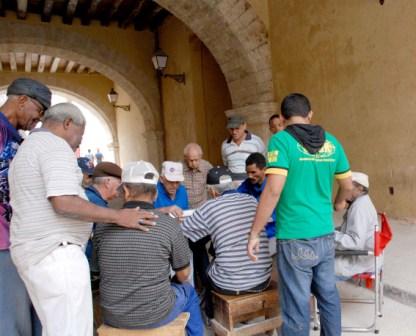E-mail to Havana
By ALFREDO PRIETO*

Barack Obama’s inauguration opened the doors of the White House to the 44th US President and the 11th who must deal with the “Cuban problem” after fifty years of conflict.
During that period, the way of coping with “the closest of enemies” has taken diverse paths, but characterized by similar goals and the failure of the methods.
Sabotages, political-diplomatic isolation, terrorist attacks, embargos/blockades, bacteriological warfare, extraterritorial laws, and “hugs of death” have comprised the dossier, constituting tools of a policy with little pragmatism and fatally condemned to repetition.
In terms of change, Obama’s resolve has been fast and energetic. Only hours after taking office he signed an executive order to close the prison at the Guantanamo Naval Base within a year, ordered the suspension of the tortures and the secret CIA prisons.

He also sent the Pentagon a plan for withdrawing the troops from Iraq in 16 months and announced new measures in the policy towards immigrants, thus reacting to four of the most criticized policies of the outgoing administration.
Cuba is not one of Obama’s foreign policy priorities; rather, he is focused first on the Middle East and other current red spots.
However, the most visible indication of a change in Cuba policy is that the right-wing Cuban-Americans are not among the Hispanics selected for key positions in his administration. They have been replaced by Cuban-American fashion designers whose talents have spurred the press to talk about the fresh style and spirit of renewal of the First Lady.
Striking down the measures taken by the Bush administration in the summer of 2004 regarding travel and remittances to the island, [by and from Cuban-Americans] would be grudgingly received by a bitter hardened sector of the Cuban exiles that are becoming less significant with the generational changes and the impact of new immigration to their former stronghold.
Seen from the angle of the extremists, the idea that Obama will maintain the embargo barely constitutes a fig leaf on the traditional image of the Democrats as “soft”, in a political imagery that has historically opted for the muscle flexing and rhetoric of the Republicans, branding as “communist” everything that dissents from their pretensions and programs.”
Several experts have pointed out that Obama has before him a historic opportunity to change the fifty year policy. The big question, however, is how can he put to rest the asymmetry and logic of pre-conditioning, two of his greatest burdens.
The most recent statements by Secretary of State Hillary Clinton -who had accused Obama of being immature and irresponsible during the election campaign for having said he would meet without conditions with leaders of several “hostile regimes”- seemed to send an e-mail to Havana in the other direction.
The Cuban leadership has continued to recognize the importance of Obama’s assumption of the presidency, both in and of itself and in relation to the outgoing administration. At the same time they emphasize that it doesn’t make sense for them to make unilateral gestures, but instead be involved in a reciprocal process.
The Cuban Revolution has survived to date without the United States, including the period when its allies in Eastern Europe and the Soviet Union disappeared. It doesn’t consider normalization of relations a priority, but it is open to a dialogue among equals.
For now, Havana has never seen itself so accompanied at the different world and continental forums, independent of the opinion that some governments might have about its internal policies. This presents the following dilemma to Obama: either join the concert of nations or pay the price of being alone and being the ugly duckling in the family photo. The times, as old Dylan sang, are a-changing.
*Cuban essayist and editor who lives in Havana.
